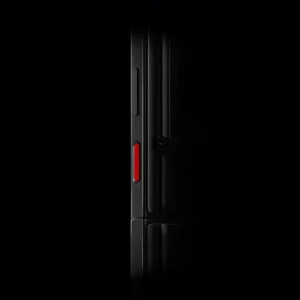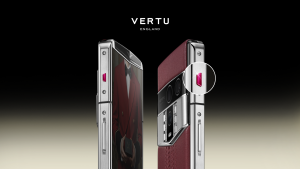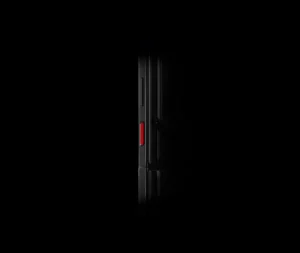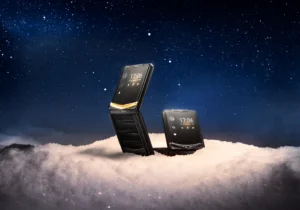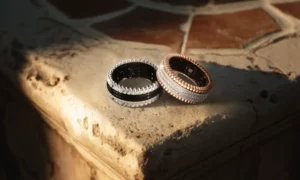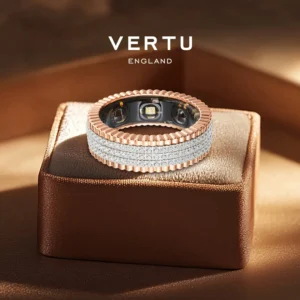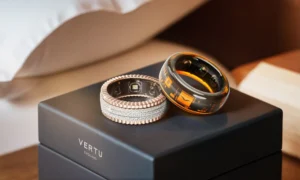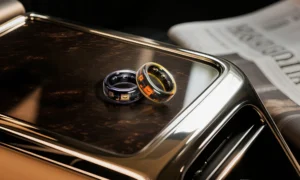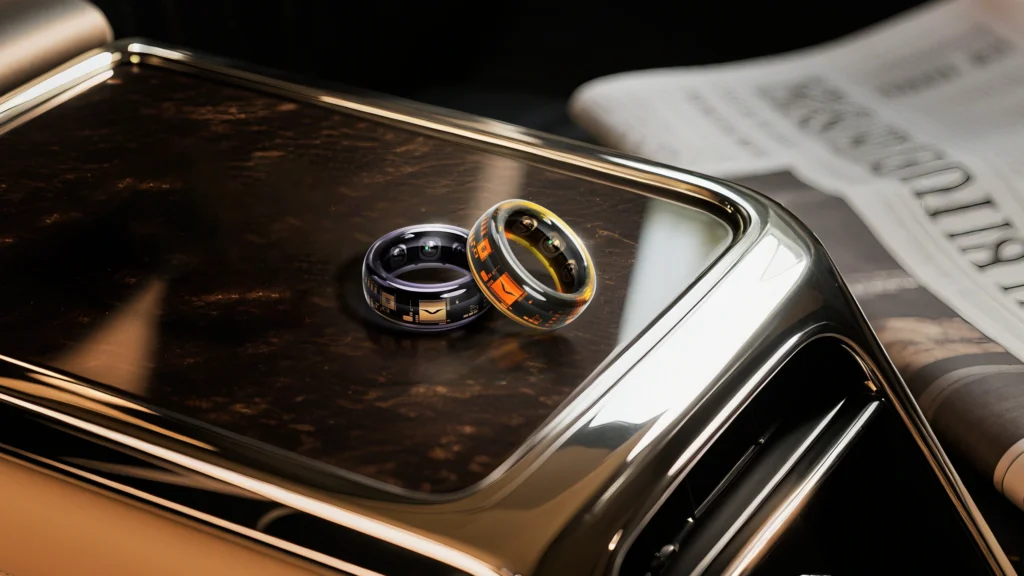
Have you ever slipped on a mood ring and wondered if it could really read your feelings? You might not know that mood rings once flew off store shelves at lightning speed.
-
In just three months back in 1975, people bought 40 million mood rings.
-
Sales hit $15 million that year, with some rings costing up to $250.
-
The craze even left companies with piles of unsold rings by 1976.
You could spot mood rings everywhere, from playgrounds to parties. Maybe you remember the thrill of watching the colors change and guessing your mood. The magic still lives on today, with new twists like the Aura Ring keeping the fun alive.
Key Takeaways
-
Mood rings change color because special crystals react to body heat. They do not read your mind. Mood rings were very popular in the 1970s. Millions of people bought them. They showed self-expression and feelings. The colors on a mood ring stand for different feelings. Blue means calm. Purple means excitement. There are many fun stories and myths about mood rings. But the color changes only show temperature changes. Mood rings are still liked today. They make people feel happy and remember the past. They mix science, style, and a little magic.
Mood Rings Basics

How Mood Rings Work
Have you ever wondered what makes mood rings change color? The secret is inside the band. Mood rings use thermochromic liquid crystals. These crystals react to heat from your skin. When your body temperature shifts, the crystals absorb the heat and bend light in different ways. This bending changes the color you see on the ring. Shorter wavelengths show up as blue or purple, while longer wavelengths look red. So, your color-changing ring acts like a tiny thermometer on your finger!
Scientists have explained this process using chemistry and physics. The color change does not actually read your mind, but it does respond to your body’s temperature. When you feel excited or nervous, your temperature can go up or down, which makes the ring shift color. This is why people connect the ring’s color to their mood or emotional state.
Fun Fact: Mood rings first appeared in the 1970s. Joshua Reynolds and Maris Ambats invented them in 1975, and they quickly became a huge hit. People loved the idea of wearing their feelings on their fingers!
Color Meanings
You might have seen a mood ring chart before. This chart helps you figure out what each color means. Every color stands for a different mood or feeling. Here’s a quick guide:
|
Color |
Mood or Feeling |
|---|---|
|
Black |
Stressed or tense |
|
Brown/Gray |
Nervous or anxious |
|
Yellow |
Mixed emotions |
|
Green |
Calm or relaxed |
|
Blue |
Happy or peaceful |
|
Purple |
Passionate or excited |
Mood rings became popular during the free love and hippie movements. People wanted to express their feelings and connect with others. Even today, mood rings are fun, affordable, and a little bit magical. You can still find them in stores, and they continue to spark curiosity about your emotional state.
Fun Facts
Mood Rings History
Let’s take a trip back to the 1970s. You might be surprised to learn that mood rings started as a wild idea from two inventors, Joshua Reynolds and Maris Ambats. They brought mood rings to American stores in 1975, and people could not get enough of them. The rings used thermochromic liquid crystals, which changed color with your body heat. Reynolds even called them a “biofeedback tool,” linking them to the wellness trends of the time.
Here’s a quick look at how the story unfolded:
-
Marvin Wernick first thought of using liquid crystals for jewelry in 1974, but he never patented his idea.
-
Reynolds and Ambats jumped in and created their own version, calling it the “Mood Stone” before settling on mood rings.
-
The rings hit stores, and shoppers rushed to buy them. A New York City department store sold thousands in just weeks.
-
By the end of 1975, mood rings had made about $15 million in sales. Some rings cost as much as $250!
Did you know? The inventors made their first million dollars in just a few months. Mood rings became a symbol of the “Me Decade,” when people loved exploring their feelings and emotions.
Dr. Anne Marie Helmenstine, a science expert, explains that mood rings change color because of temperature, not because they can really sense your mood. Things like the weather or how you wear the ring can change the color, too. That’s part of the whimsy! People loved the idea, even if the science was a bit shaky.
1970s Craze
The mood ring craze swept across the country like a tidal wave. You could spot mood rings on everyone’s fingers, from kids to celebrities. Stores could barely keep up with the demand. One New Jersey store sold 25,000 rings in just three weeks!
Mood rings were not just jewelry. They became a way for people to show off their feelings. The colors promised to reveal your mood, making every day a little more exciting. Mood jewelry fit right in with the 1970s love for self-expression and emotional honesty.
Here’s a table showing just how wild the craze got:
|
Year |
Sales Volume |
Price Range |
Fun Fact |
|---|---|---|---|
|
1975 |
$45 (silver)–$250 |
Sold out in weeks at some stores |
|
|
1976 |
Declined |
Cheaper knock-offs |
Market flooded with copies |
The popularity of mood rings did not last forever. By 1976, stores had too many unsold rings. Knock-offs flooded the market, and the fad faded. Still, mood rings left a mark on pop culture. They became a classic example of kitsch—fun, quirky, and a little bit silly.
Tip: If you find an old mood ring in your drawer, try it on! You might feel a wave of nostalgia and remember the magic of watching the colors shift with your mood.
Mood rings may not read your mind, but they sure know how to spark curiosity and laughter. Their blend of science, style, and a dash of mystery keeps them alive in our memories.
Surprising Stories
Urban Legends
You might have heard some wild stories about mood rings. People love to share tales about these magical-looking rings. Some say mood rings can predict the future or warn you about danger. Others claim the rings can tell if someone is lying. These stories sound fun, but they are just myths.
One popular legend says a mood ring will turn black if someone nearby has bad intentions. Imagine sitting in class and watching your ring change color. You might start to wonder if your friend is hiding something! In reality, the ring just reacts to your body temperature. If your hands get cold or sweaty, the color will shift. The ring does not have secret powers, but the stories make wearing one even more exciting.
Did you ever hear that mood rings can break if you get too angry? That’s another myth! The ring might crack if you drop it, but your mood will not shatter it.
Some people even believed mood rings could help you find true love. If your ring turned blue when you held hands with someone, you were meant to be together. These legends made mood rings feel magical, even if the science behind them was simple.
Celebrity Tales
Celebrities have always loved a good trend, and mood rings are no exception. In the 1970s, you could spot famous faces showing off their rings at parties and on TV. Even today, stars sometimes bring back the trend for fun.
Here are a few fun stories:
-
David Bowie once wore a mood ring during an interview. Fans tried to guess his mood by watching the colors change on his finger.
-
Barbra Streisand gave mood rings as gifts to her friends. She thought they were a perfect way to show you care.
-
In the 1990s, mood rings made a comeback. Pop stars and actors wore them on red carpets and in music videos.
You might have seen a viral moment online where someone’s ring changed color during a big event. People love to share these clips, even if the color change just means someone got nervous or excited.
Today, you can find high-tech versions like the Vertu Aura Ring. This modern ring uses sensors and apps to track your mood and health. It shows how the idea of mood rings keeps evolving. You can still enjoy the fun and mystery, just with a digital twist.
Tip: If you ever meet a celebrity, check their fingers. You might spot a mood ring shining back at you!
Mood rings have sparked stories, laughter, and even a few myths. Whether you believe the legends or just love the colors, these rings always bring a little surprise to your day.
Mood Rings in Pop Culture
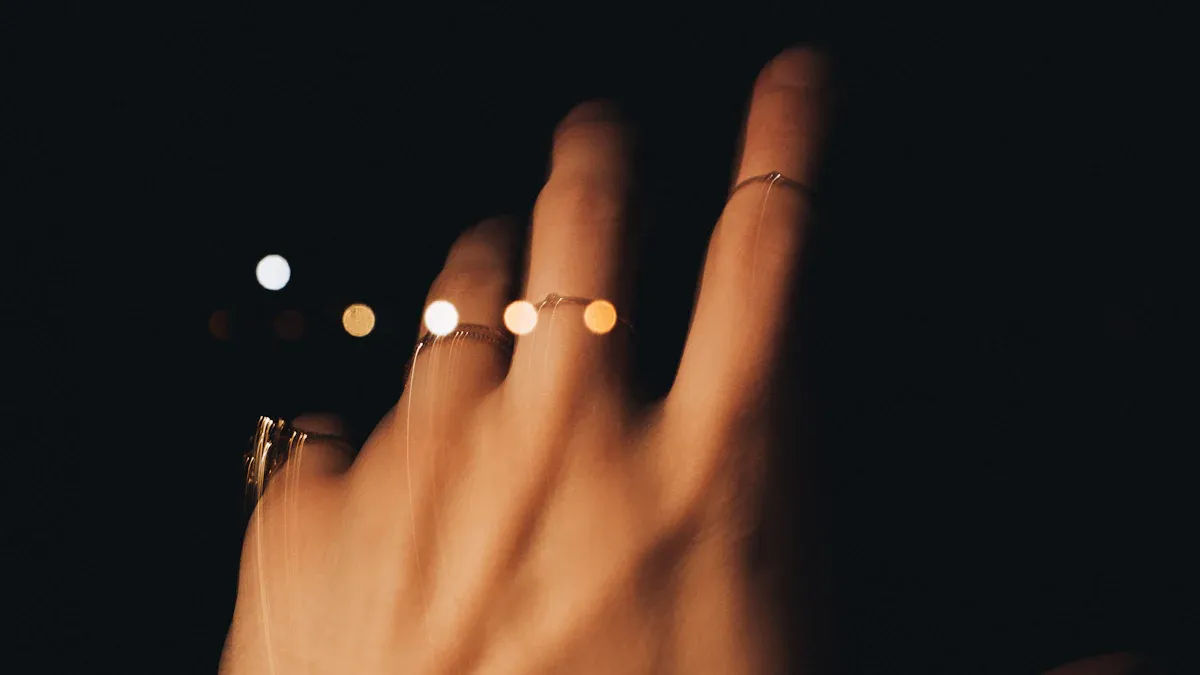
Movies and TV
You have probably seen mood rings pop up in your favorite movies and TV shows. Directors love to use them as a symbol of changing feelings or mystery. In some teen comedies, a character might check their ring to see if their crush likes them back. You might remember a scene where a detective uses a mood ring to guess if someone is telling the truth. Even cartoons sometimes show mood rings glowing with wild colors during funny moments.
Music videos from the 1980s and 1990s often featured mood rings. Singers wore them as part of their bold outfits. The rings added a touch of magic and fun to the screen. When you spot a mood ring in a show or movie, it usually means something exciting or emotional is about to happen.
Next time you watch an old TV show, look for a mood ring on someone’s hand. You might be surprised how often they appear!
90s Nostalgia
Mood rings made a huge comeback in the 1990s. Stores sold them next to slap bracelets and Tamagotchis. Kids traded them at school and wore them to birthday parties. The bright colors and simple design fit right in with the playful style of the decade. You could find mood rings in vending machines, toy stores, and even cereal boxes.
The love for mood rings did not fade away. In recent years, 90s nostalgia has brought them back again. People want to relive the fun and excitement of their childhood. A 2022 study found that 22% of American shoppers bought vintage mood rings. This number shows a real revival in their popularity. Mood rings now stand with lava lamps as top vintage items. You can see them on social media, in fashion magazines, and even in new movies.
Nostalgia makes you smile and remember good times. Mood rings help you feel that magic all over again. When you slip one on, you join a trend that keeps coming back, thanks to the power of 90s nostalgia.
Lasting Appeal
Why We Love Mood Rings
You might wonder why mood rings still capture your attention after so many years. The answer goes deeper than just changing colors. When you slip one on, you get more than a piece of jewelry. You get a tiny window into your feelings. People love mood rings because they help you notice your mood in a fun way. You can look down and see a color that matches how you feel—calm, excited, or even a little stressed.
Jewelry has always played a big part in how people show who they are. For thousands of years, people have worn rings, necklaces, and bracelets to express their identity and share their emotions. Mood rings fit right into this tradition. They let you show your mood without saying a word. You might even feel a sense of whimsy every time the color shifts.
Did you know? Emotional marketing works because it connects with your deeper needs. When you feel a bond with something, you want to keep it close. That’s why mood rings inspire loyalty and keep popping up in new trends.
The Magic Lives On
Mood rings never really go out of style. Their popularity comes from the way they mix science, style, and a little bit of magic. You see them in movies, on social media, and in stores. Each time you wear one, you join a long line of people who love to watch their mood change colors.
-
Jewelry often marks special moments or feelings.
-
Mood rings turn your mood into something you can see and share.
-
They remind you that it’s okay to feel different things each day.
You might notice that mood rings keep coming back, just like other classic trends. They make you smile, spark memories, and invite you to check in with yourself. That’s the real magic—turning your mood into a colorful story you can wear.
You have seen how mood rings mix science, style, and a bit of magic. These rings have sparked wild stories and brought smiles for decades. You might remember the thrill of watching your mood shift colors. People still love the way a simple ring can show a mood or start a conversation. Do you have a favorite mood ring memory? Share your story in the comments and join the fun!
FAQ
How do I clean my mood ring?
You can wipe your mood ring with a soft, dry cloth. Avoid water and harsh chemicals. If your ring gets wet, dry it right away. This helps keep the colors bright and the ring looking new.
Tip: Store your ring in a cool, dry place!
Why did my mood ring stop changing colors?
Your ring might stop changing colors if it gets old or damaged. Sometimes, the liquid crystals inside break down. If you wear it in water or leave it in the sun, it can stop working. Try a new ring if yours stays the same color.
Can mood rings really tell my mood?
Mood rings react to your body temperature, not your feelings. When you feel nervous or excited, your temperature changes. The ring picks up on that. It cannot read your mind, but it can show when your body reacts to emotions.
Are mood rings safe to wear every day?
Yes, you can wear your mood ring every day. Most rings use safe materials. If you have sensitive skin, check for nickel or other metals. If you notice a rash, take the ring off and try a different style.
😊 Mood rings are fun for all ages!

